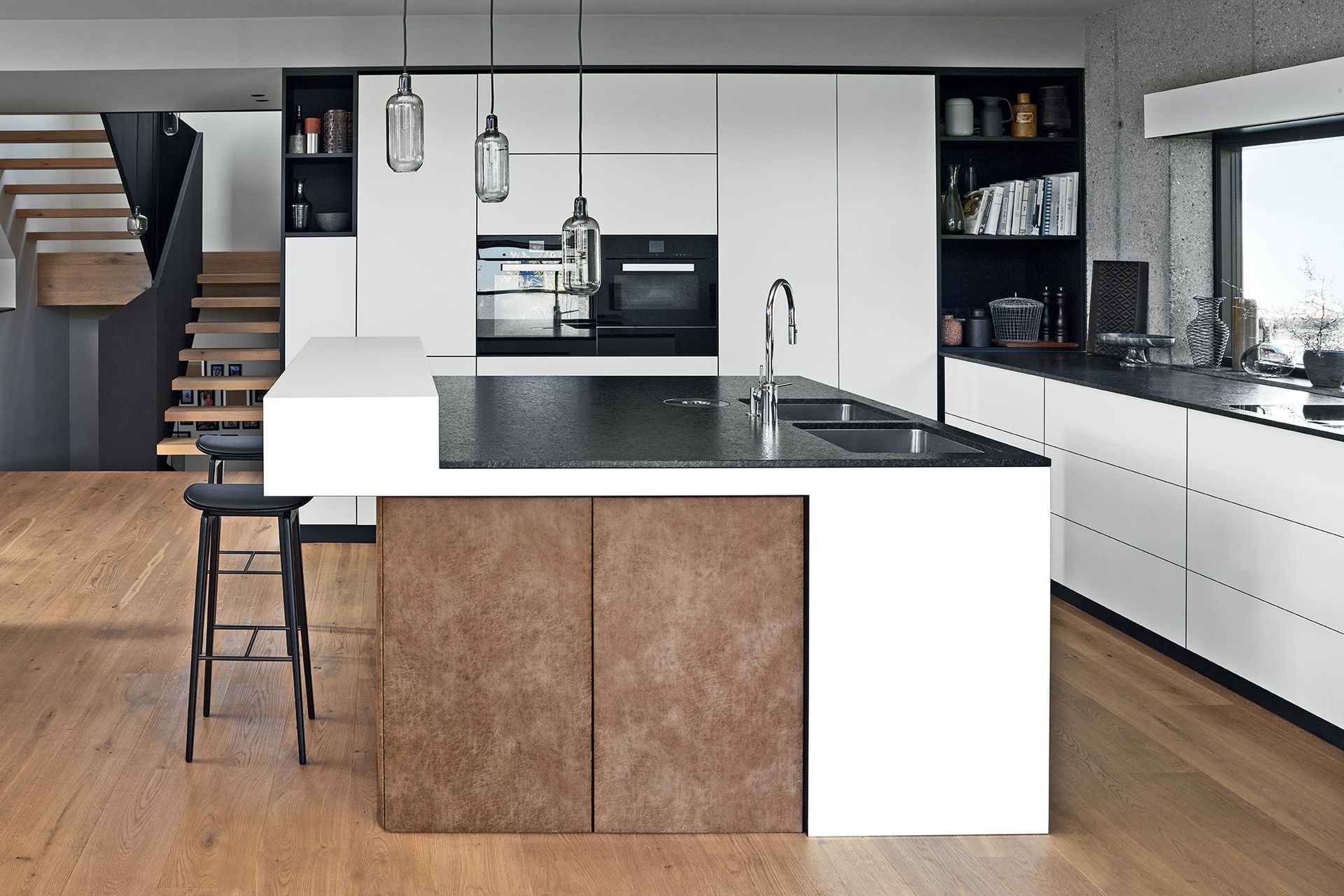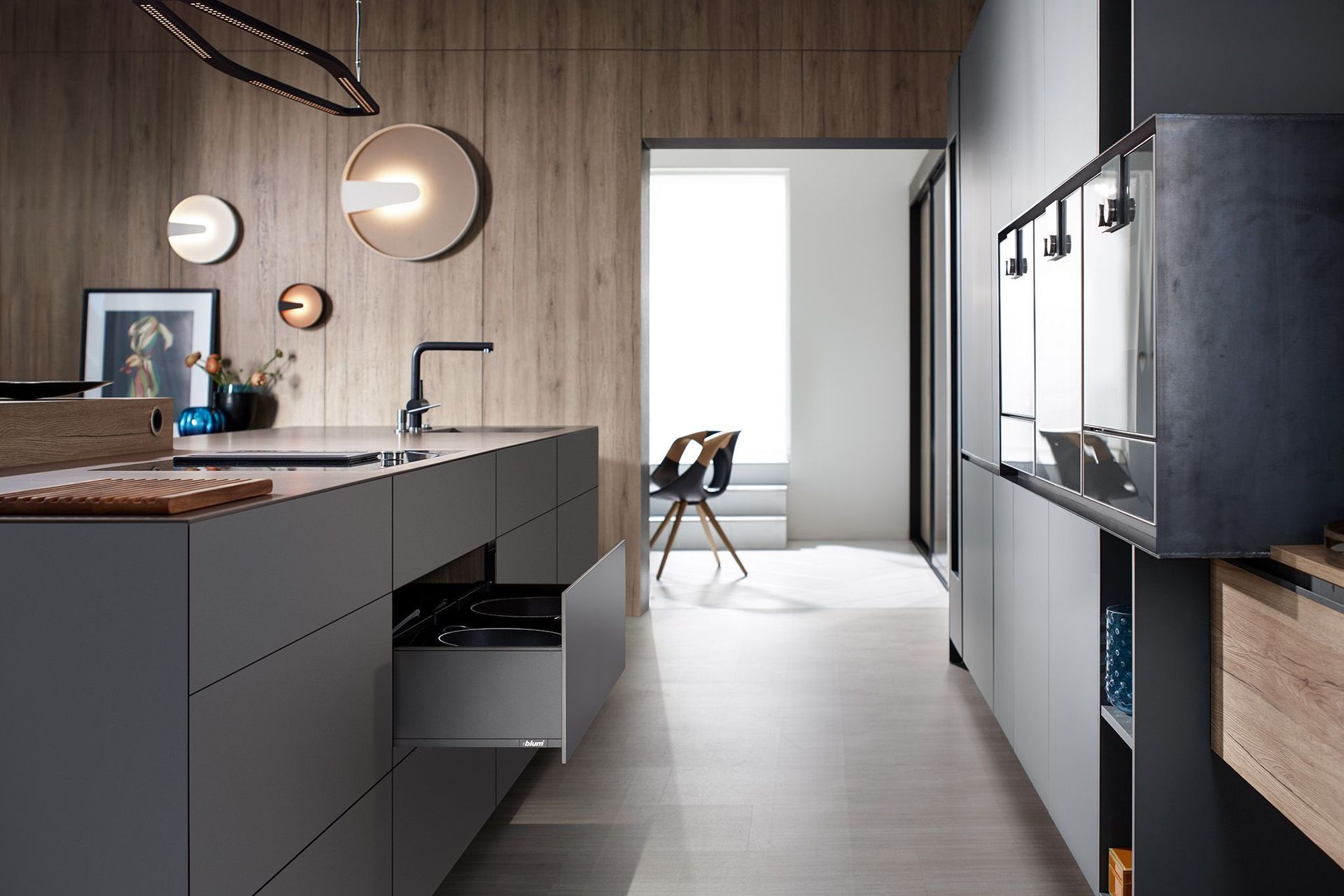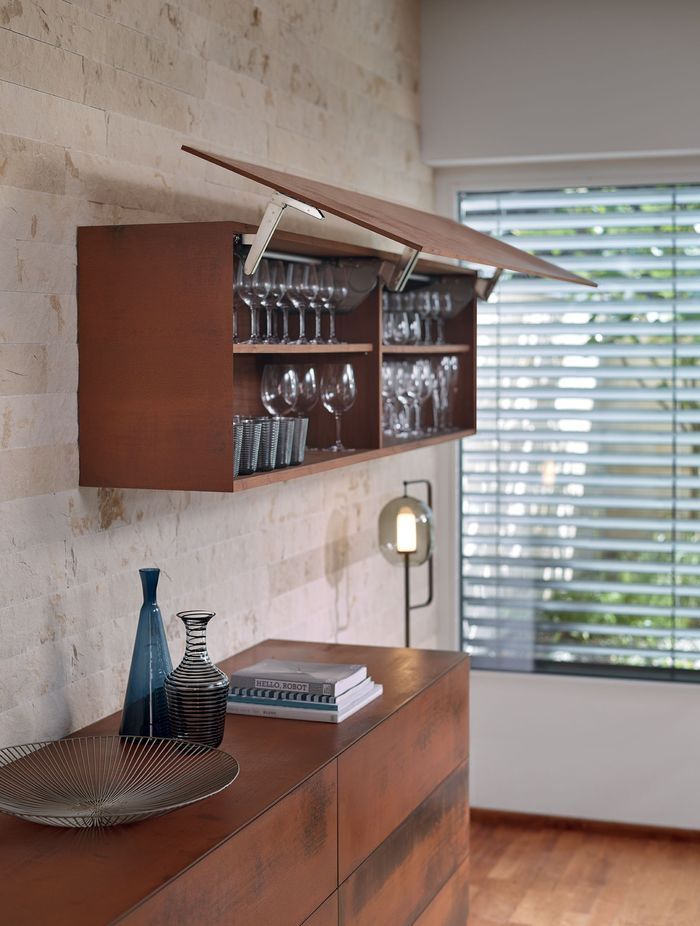Extra-thin cabinetry fronts now possible with new Blum product
Written by
02 December 2018
•
3 min read

Minimalism is a clear trend when it comes to kitchens and bathrooms and Europe has led the way with stunningly simple kitchen designs using a monolithic palette or material.
The sleek, material-focused look is typically achieved using fine, thin cabinetry and benchtops, where the detailing is in the elegance of form rather than in the combination of materials.
Top New Zealand designers and architects have taken the minimalist aesthetic on board, yet until now it has been Kiwi ingenuity alone that has realised the use of thin cabinetry and fronts, with the sandwiching of layers of substrates used to attach fixing systems to fronts.
But with the new release of the revolutionary Blum fixing system, Expando T, there are no more restrictions on design for thin fronts of 8-14mm.
The unique dowel system was developed in Austria in response to the frustration of specifiers who wanted to use fronts less than 16mm thick and the revolutionary product means all horizontal and vertical surfaces can now be rendered from the same material if desired, says Blum’s Sophie Beets.
“It’s a fixing system that goes across all hardware mechanisms and it means that you can use a lot of the materials that are typically used as benchtop materials on vertical surfaces or horizontal.”
Expando T can be used for cabinetry fronts, doors, pull-outs, over-head cabinets, island bench end panels and can attach to material including stone (both natural and composite), HPL, ceramic and MDF.
It’s breaking down the limitations in the material world for kitchen and cabinetry design, says Sophie.
“We are seeing a monolithic look coming out of Italy where you see the same surface material completely encompassing an island and Expando T takes away the limitations of having to use thicker panelling.”
For elegantly thin end panels of island benches that are matched to the counter top surface, there’s an individual Expando T dowel that can be used to attach the thin panel or inset.
“We’re also seeing a few clever ways where designers are using it to frame certain objects - whether that’s an appliance or an end panel of an island - it creates a unique and minimalist aesthetic.”
The new fixing method is impressively easy to use, with fronts assembled in just three steps: drill, insert and tighten screws - for all materials and applications.
Sophie says there’s a lot of interest in the fixing system in the commercial sector, where there might be requirements around using high-level hygienic surfaces for both horizontal and vertical planes.
Naturally, with so many applications, it’s already won design awards including the German Red Dot Design Award and the iF Gold Award.
Designers and architects can find the product specifications and videos on the recently upgraded Blum website, which is now mobile friendly and device responsive.
It’s a user-friendly hub, so cabinet makers can find technical info easily, and specification details are much easier to access for architects and designers, as well as downloads, videos and a product range tab.
The product range tab for each product is really where architects and designers can find the New Zealand range tailored for them, says Sophie.
The simplicity of specification is what architects have been crying out for “it means having all the drawer side heights in one easy overview, on one page, for example, so that they can see everything they need for each product.”
Want to know more about using Expando T for thin fronts? Be sure to visit Blum on ArchiPro today or visit the Blum website to learn more.


